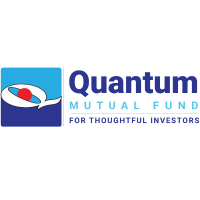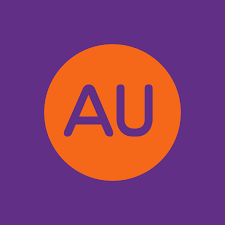The Quantum Asset Management Company Private Limited is responsible for managing all the funds of the company. Both Quantum Mutual Fund and Quantum Asset Management Company are sponsored by Quantum Advisors Private Limited, the first institutional equity research firm in India.
On Quantum Mutual Fund Official Website

Updated: 16-07-2024 02:30:22 PM
Quantum Mutual Fund offers investment schemes in 4 categories – Equity, Debt, Gold, and Multi-Asset. In the equity category, there are 4 types of funds which are Quantum Long Term Equity Value Fund, Quantum Tax Saving Fund, Quantum Equity Fund of Funds, and Quantum Nifty ETF.
The debt category has 2 kinds of funds – Quantum Liquid Fund and Quantum Dynamic Bond Fund. The gold category has 2 kinds of funds – Quantum Gold Fund ETF and Quantum Gold Savings Fund. The multi-asset category has only one kind of fund which is Quantum Multi Asset Fund.
Equity schemes invest mainly in stocks and hence, they are also known as stock funds. Quantum Mutual Fund offers 4 kinds of equity funds and we have explained each of them below:
Quantum Long Term Equity Value Fund – It is an open-ended equity scheme that follows a value investment strategy and has a potential of offering high returns to the investor but is also accompanied by high risks.
Investment objective – Offer investors long-term capital appreciation by investing mainly in shares of firms in S&P BSE 200 Index.
Ideal for – Investors who are looking to invest so as to realise their long-term financial goals.
Scheme features:
| Benchmark Index | S&P BSE 30 Total Return Index (TRI) |
| Total Expense Ratio | |
| Investment Options | Growth and Dividend |
| Minimum Investment | Rs.500 |
| Entry Load | Not Applicable |
| Exit Load | |
| Riskometer | Moderately High |
Quantum Equity Fund of Funds- This is an open-ended scheme that invests in 5 to 10 diversified equity schemes of third-party mutual funds.
Investment objective – To invest in the best diversified equity schemes by doing a robust research of more than 350 equity-related schemes.
Ideal for – Investors who are looking to diversify their investment portfolio while also achieving their long-term financial targets.
Scheme features:
| Benchmark Index | S&P BSE 200 TRI |
| Total Expense Ratio | |
| Investment Options | Growth and Dividend |
| Minimum Investment | Rs.500 |
| Entry Load | Not Applicable |
| Exit Load | 1.5% for redemption within 365 days |
| Riskometer | Moderately High |
Quantum Nifty ETF – This fund mirrors the NIFTY 50 Index which means that the stocks that form a part of NIFTY 50 find place in the portfolio in the same proportion and weightage.
Investment objective – To offer returns equivalent to NIFTY 50 by replicating the index while reducing the tracking error.
Ideal for – Investors who hold a belief that markets pick the perfect stocks and desire a fund that replicates the index without being managed by a fund manager.
Scheme features:
| Benchmark Index | Nifty 50 TRI |
| Total Expense Ratio | 0.09% |
| Investment Options | Growth |
| Minimum Investment | Rs.5,000 |
| Entry Load/Exit Load | Not Applicable |
| Riskometer | Moderately High |
Funds investing in a mixture of debt or fixed income securities such as corporate bonds, government securities, treasury bills are called debt schemes. Debt securities usually have a fixed maturity date and returns are also based on a fixed rate of interest.
Quantum Liquid Fund – This fund invests mainly in money market instruments such as treasury bills, certificates of deposit (CD), commercial paper, and term deposits. It was designed for investors looking to invest in savings bank account type of schemes but which offers higher interest rates.
Investment objective – To provide optimal returns with low to moderate risk levels and higher liquidity through prudent investments in debt and money market instruments.
Ideal for – Investors who wish to receive income over the short-term.
Scheme features:
| Benchmark Index | CRISIL Liquid Fund Index |
| Total Expense Ratio | |
| Investment Options | Growth, Daily Dividend Reinvestment and Monthly Dividend Option |
| Minimum Investment | Rs.5,000 |
| Entry Load/Exit Load | Not Applicable |
| Riskometer | Low |
| Fund Manager | Mr. Pankaj Pathak |
Quantum Dynamic Bond Fund – This fund is an open-ended debt scheme having a dynamic maturity profile and fixed credit exposure. It prefers investing in superior quality debt and money market instruments.
Investment objective – To generate income and enhance the capital by actively managing portfolios of short-term, long-term debt, and money market instruments. In the process, it tends to minimise the credit risk.
Ideal for – Investors with a desire to invest in high-quality money market instruments but do not wish to pay a high expense ratio.
Scheme features:
| Benchmark Index | CRISIL Composite Bond Fund Index |
| Total Expense Ratio | |
| Investment Options | Growth, Monthly Dividend Payout, and Monthly Dividend Reinvestment |
| Minimum Investment | Rs.500 |
| Entry Load/Exit Load | Not Applicable |
| Riskometer | Moderate |
Quantum Gold Fund ETF – This fund invests in physical gold. The fund seeks to provide investors with an innovative and cost-effective way to invest in gold assets. Every unit in the fund is equivalent to 0.5 gram of gold.
Investment objective – Providing investors with excellent means of asset allocation.
Ideal for – Investors who wish to invest in gold without paying for making charges or worrying about storing gold.
Scheme features:
| Benchmark Index | Domestic Price of Physical Gold |
| Total Expense Ratio | 1.02% |
| Investment Options | Growth |
| Minimum Investment | Rs.5,000 |
| Entry Load/Exit Load | Not Applicable |
| Riskometer | Moderately High |
| Fund Manager | Mr. Chirag Mehta |
Quantum Gold Savings Fund – This fund is an open-ended fund of fund scheme that invests in Quantum Gold Fund units. This fund offers investors with an opportunity to frequently invest in gold through Systematic Investment Plans (SIP).
Investment objective – Offer capital gains by mainly investing in units of Quantum Gold Fund-ETF which in turn invests in physical gold.
Ideal for – Investors who wish to include gold in their investment portfolio. Also, investors who wish to invest in Gold ETFs but do not have a demat account can invest in this fund.
Scheme features:
| Benchmark Index | Domestic Price of Gold |
| Total Expense Ratio | |
| Investment Options | Growth |
| Minimum Investment | Rs.500 |
| Entry Load/Exit Load | Not Applicable |
| Riskometer | Moderately High |
Multi-Asset schemes are an amalgamation of asset classes – debt, equity, and gold. The biggest benefit of such funds is diversification and due to this, they have low volatility which ensures that investors enjoy good returns over a long term.
Quantum Multi Asset Fund – This fund invests in various schemes of Quantum Mutual Funds and diversification is its main strategy. It offers the benefits of investing in multi schemes by investing in a single scheme. The portfolio is dynamic which means it allocates investments in debt, equity, and gold, all at the same time.
Investment objective – To generate adequate capital gains for the investor by combining various asset classes while also reducing the risk.
Ideal for – Investors seeking current income and capital gains over a long term.
Scheme features:
| Benchmark Index | CRISIL Composite Bond Fund Index (40%) + Domestic price of gold (20%) + S&P BSE Sensex Total return Index (40%) |
| Total Expense Ratio | 0.26% – Direct Plan
0.38% – Regular Plan |
| Investment Options | Growth |
| Minimum Investment | Rs.500 |
| Entry Load/Exit Load | No Entry Load; Exit Load- 1% for redemption within 90 days |
| Riskometer | Moderately High |
For investors who not only wish to invest in equities but also save on tax, the Quantum Tax Saving Fund by QMF is the perfect investment option. It is an open-ended, equity-linked scheme with a lock-in period of 3 years and lets investors enjoy tax benefits. For long-term capital appreciations over Rs.1 lakh, 15% tax is applicable while for short-term capital gains, the rate is 15%. The tax benefits under this scheme are in accordance with the guidelines of Section 80C of the Income Tax Act.
Investment objective – Offer investors long-term capital appreciation by investing mainly in shares of firms in S&P BSE 200 Index while also offering tax benefits under Section 80C of the Income Tax Act.
Ideal for – Investors who wish to enjoy tax benefits while also realising their long-term financial goals.
Scheme features:
| Benchmark Index | S&P BSE 30 Total Return Index |
| Total Expense Ratio | 1.29% – Direct Plan
1.46% – Regular Plan |
| Investment Options | Growth and Dividend |
| Minimum Investment | Rs.500 |
| Entry Load/Exit Load | Not Applicable |
| Lock-in Period | 3 years from allotment date of the units |
| Riskometer | Moderately High |
The below persons/entities are eligible to invest in the units of Quantum Mutual Funds:
Before investing in any mutual fund scheme, investors need to have a Permanent Account Number (PAN), bank account, and have to comply with the Know your Customer (KYC) guidelines. To complete the KYC process, investors need to submit the duly filled application form along with a recent passport size photograph, Identity Proof (PAN card, Aadhaar Card, Driving Licence, Voter ID, Passport), and Proof of Residence (Aadhaar Card, Driving Licence, Voter ID, Passport). The documents need to be attested by self and submitted along with the original copies, for verification.
After completion of the KYC process, the investor can invest in any scheme of QMF
Interested investors can use any of the below modes to invest in the various schemes of Quantum Mutual Funds:
Please note that only Know Your Customer (KYC) compliant entities can invest in Quantum Mutual Funds.










Yes, you can hold the units of QMF in a dematerialised form. To avail that, you need to have a Demat account with a depository participant (DP) and while submitting the application form, you will need to furnish the details of the account number with the DP.
Foreign nationals, NRIs living in USA and Canada, countries who do not comply with Financial Action Task Force (FATF), and Qualified Foreign Investors (QFIs) are not allowed to invest in the schemes of QMF.
There are 2 modes of payment available – Offline and Online. Through the offline mode, you can either make a payment through cheque, Demand Draft (DD), One Time Mandate (OTM), National Automated Clearing House (NACH), and direct debit/auto debit for investments through SIP. The online payment method offers the following options of payment – Netbanking, Debit Cards, National Electronic Funds Transfer (NEFT), Real Time Gross Settlement (RTGS), Prepaid Cards, OTM/NACH, and Interbank Mobile Payment Service (IMPS).
Unfortunately, switch option is not available for different portfolios or schemes. However, within the same folio, switch option is available, provided the specified criteria are fulfilled. Switch request is also not allowed for units from one folio to another.
There are primarily 2 ways in which the investor can redeem the units of QMF – Online and Offline. The online facility is available only for investors with a User ID, PIN, and whose investments are not in a demat form. To redeem the units through the online mode, the investor needs to login to the online investment portal using the user ID and pin. He/she then needs to access the ‘Commercial Transactions’ section and select the ‘Redemption’ or ‘Insta Redemption’ tab based on the respective scheme and requirement. Following that, he/she will need to key in the required details and click on the ‘Submit’ button.For redemption through the offline mode, the transaction slip has to be downloaded by the investor from the ‘Download’ section on the official QMF site. Prior to that, the investor needs to fill the required details containing the scheme name, folio number, units you wish to redeem, etc. After signing the slip, the investor will then need to submit a written request for redemption in any of the QMF offices or collection centres.Besides these 2 methods, there are other methods through which redemption can be carried out – redemption through SMS, WhatsApp, Hike, etc
There are certain charges that will be levied on redemption. The redemption amount that the investor will receive, will depend on exit load pertaining to a particular scheme, the NAV applicable for that scheme, and the Securities Transaction Task (STT).